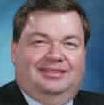Exploring the possibility of introducing Supplemental Instruction at secondary school level.

Globally, mathematics and science pass rates at school level have been a much discussed and researched issue. Teachers are tasked with the responsibility of alleviating learners’ challenges associated with the learning of mathematics and science. Thus, teachers are pursuing innovative techniques for improving the understanding of and increasing the pass rates in mathematics and science. Academics in higher education have recognised that first year students experience difficulty with high-risk courses such as mathematics and science. One successful innovative strategy used at university level is Supplemental Instruction (SI). This is a peer support programme, which targets high-risk courses, and is aimed at developing subject-specific learning skills to foster independent learners, who will take responsibility for their own learning. This article explores the SI context at university level, with the aim of adapting this type of support programme at secondary school level. Data was collected via a questionnaire administered to selected academics, interviews with academics, as well as interviews with university students who have participated in SI sessions at university level. An analysis of the data suggests that schools may be able to adapt the SI model with the aim of assisting learners to develop key study skills to improve understanding in mathematics and science. This improved understanding of content could lead to an improvement in mathematics and science pass rates at secondary school level.
To download the complete annotated bibliography of more than 1,100 citations on postseconeary peer cooperative learning programs, click on the following link, http://z.umn.edu/peerbib
